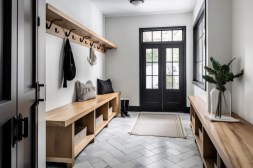Top 5 Essential Tips for Building Your First DIY Solar Heater
If you’re looking to harness the power of the sun and save on energy costs, building your own DIY solar heater can be an exciting and rewarding project. Not only do you get to learn about solar energy, but you also contribute to a more sustainable environment. In this article, we’ll share five essential tips that will help beginners successfully build their first solar heater.
Understand the Basics of Solar Heating
Before diving into construction, it’s crucial to understand how solar heating works. Solar heaters capture sunlight using a collector (usually a flat panel) that absorbs heat and transfers it to a fluid (like water or air). This heated fluid is then used for space heating or hot water. Familiarizing yourself with these concepts will make the building process smoother and more efficient.

Choose the Right Materials
Selecting high-quality materials is key to the efficiency and longevity of your solar heater. Common materials include black paint (to enhance heat absorption), clear plastic or glass (for covering), insulation material (to minimize heat loss), and plumbing pipes if you’re creating a liquid-based system. Research which materials work best for your specific design before making any purchases.
Start Small with Simple Designs
As a beginner, it’s advisable to start with simple designs like a basic box-style solar heater or a plastic bottle heater. These projects require fewer materials and are easier to assemble while still providing effective heating results. Once you’ve mastered these simpler designs, you can gradually take on more complex projects as your skills improve.
Positioning Matters: Optimal Placement
The placement of your solar heater plays an integral role in its effectiveness. Ideally, it should face south (in the northern hemisphere) at an angle corresponding to your latitude for maximum sun exposure throughout the year. Avoid any obstructions such as trees or buildings that could cast shadows on your setup during peak sunlight hours.
Monitor Performance and Make Adjustments
After constructing your DIY solar heater, take some time to monitor its performance over different seasons and weather conditions. Assess how well it heats up during sunny days versus cloudy ones, and consider making adjustments if necessary—such as improving insulation or changing angles—to optimize efficiency further.
Building your first DIY solar heater can be an enriching experience that not only enhances your understanding of renewable energy but also provides practical benefits in terms of reduced energy bills and environmental impact. By following these essential tips, you’ll be well on your way toward creating an efficient system tailored just for you.
This text was generated using a large language model, and select text has been reviewed and moderated for purposes such as readability.











